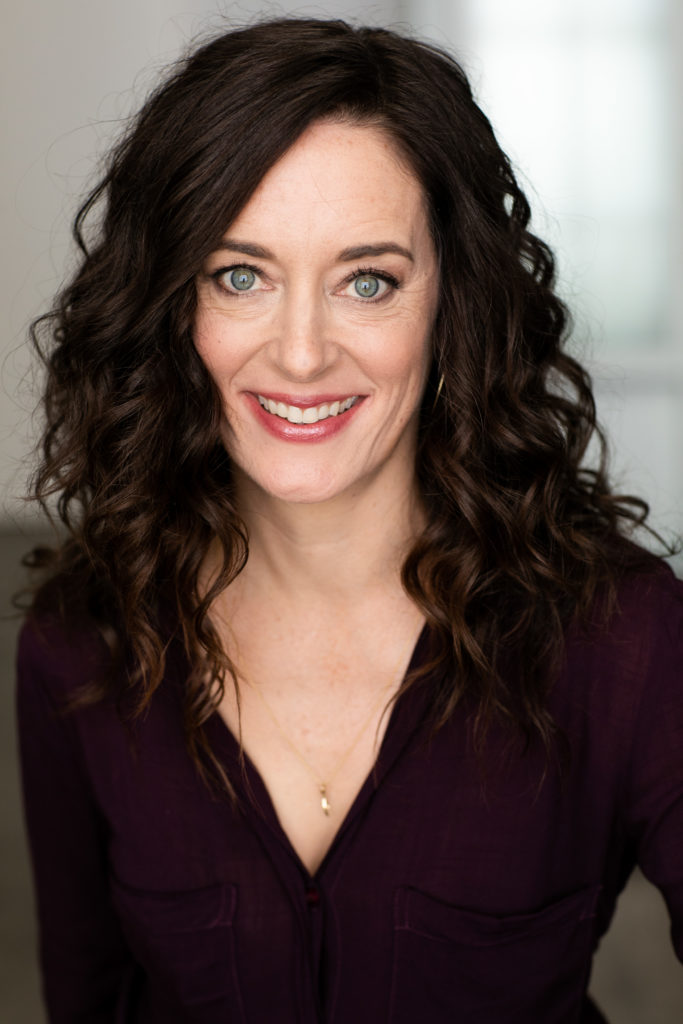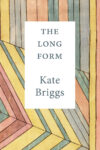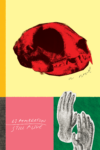In her impressive debut novel, I Keep My Worries in My Teeth (Little A, June 2020), Anna Cox animates the inner lives of three memorable women—Esther, Frankie, and Ruth—and what happens when their small Midwestern town of Lead unexpectedly falls apart. Each character embodies unique powers: Esther bites pencils (read: quality control) for a living at the Juliet Pencils factory; Frankie, a teen and daughter of the pencil factory owner, learns to speak through an intricate code of tap-dancing; and Ruth, a widow and owner of a local photo lab named Vixen Photography, who comes to terms with own her loss. Through a kaleidoscope of whimsical sadness, Cox deftly narrates these three characters’ stories and lives after an accidental explosion at the aforementioned pencil factory. What emerges is a disarming narrative that echoes the funny/sad storytelling sensibilities of Aimee Bender and Karen Russell. Cox—also a photographer and photography teacher—is a visual and language storyteller, and these talents certainly come into focus in her astute first novel.

S. Kirk Walsh: What inspired this world of the small town of Lead and the Juliet Pencil Factory?
Anna Cox: Early on, I went to a writers’ conference and pitched the idea (before I had even written anything) to an agent about a book about a group of women with spectacular, but useless abilities. And she was like, “That’s great, but you’re never going to sell that book unless you sell every single story to some place like The New Yorker.” I said, “I’m not in my twenties. I don’t have time for that. That’s not going to happen.” And she said, “Make it a novel.” And I said, “How do I make it a novel?” And she said, “Find a way that these women can connect.” Obviously that was way before I understood who any of these characters were. At the time, I was reading The Sweet Hereafter by Russell Banks. I read that book over and over again, trying to diagnostically understand how a triggering event could be told through multiple people who have subtle overlap.
In the first iterations of the novel, I had way too many characters and I didn’t know what was happening. As I kept cutting and cutting, I wanted—very much like The Sweet Hereafter—give away the major event in the beginning. I wanted to have it done with because I wanted the whole book to be about how these three women responded to this event.
I don’t remember what sparked a pencil factory, but I wanted a ubiquitous object. I didn’t want something that seemed remarkable. I wanted something that readers would understand and that they had used, but never paid any attention to. Then, it became really fun. I did a lot of research on how pencils are manufactured and how pencils are created. I watched a lot of videos about assembly lines.
Was there anything in particular that you learned that was surprising about pencils?
There was a fantastic book written by an engineer: The Pencil: A History of Design and Circumstance by Henry Petroski (Knopf; 1992). He takes one ubiquitous object in culture per book, and describes the origins of this thing and potentially the future of this thing. It’s so into the minutiae of pencils. It was remarkable. Just the amount of design that goes into something that we don’t think about at all. For me, as someone who teaches photography, I feel like that’s how people think about photography: No one thinks about how they are making images. In the novel, it’s 1979: There are no digital images, there are no cell phones. I wanted to give readers a kind of hook of looking at something they had not before because they didn’t have to consider it.
So, this is one of the reasons you set the novel in 1979?
I knew that I wanted to write not in contemporary times for a few reasons: I originally had a character named the Eraser. He fulfilled the function of an inverse Internet for the town. In a town where there is a pencil factory, you need to a character who erases people’s mistakes, figuratively. He was still in the novel when my agent looked at it, and she said, he is a great character, but you’ve got to get rid of him. It’s too much. I knew that I didn’t want the Internet to be a force in the book. I needed the book to be slow.
Obviously, Polaroid existed in the Seventies, but everything else was film that you had to wait to be developed. When you took a photograph, you didn’t know immediately what you had photographed. You actually had to imagine it through the lens, and you didn’t get immediate feedback. Also, I wanted that teenager to have a corded rotary phone. The novel that I’m writing now is set in contemporary times and I’m trying to write my way around texting because I don’t find it very interesting in dealing with it, but it’s also lazy not to deal with it.
In your email to me, you had mentioned that you had come up with a new genre to describe your novel—“griefedy.” Could you explain this?
In my personal life, I like to make up really shitty portmanteaus. I made up “griefedy” because the novel is not a tragicomedy. I think that tragicomedies focus on the thing that caused the tragedy, and great weight is given to the instigating force. With my novel, I’m not trying to hide that pencil factory is going to explode. It comes during the first twenty pages of the book. There’s not a ton of buildup to that. I wanted something about responding to tragedy through comedy—and comedy was the thing that got the characters through, or it got the reader through the heavy moments in the book. The griefedy—the grief was there, but comedy was the way to respond. It was more about the process of grieving and less about the tragic event.
Could you talk about the decision to write all three of the characters in the first-person voice—and how you wanted this choice to shape the narrative and the novel?
I can’t even imagine writing in anything other than the first person. Also, with a character like Frankie who, I wanted so much for the reader to feel like… Frankie is a teenager who is in some ways more mature and together and more aware of her circumstances—and the circumstances of the town and the suffering of the town—than her own mother. I like that as a reader, that the teenager looks at the adult world and says, “This is not a world I want to be in. This is not a world that is functioning well. This is a world that really needs a lot of work. How did people get the way they are?” Frankie needed to have the immediacy of the first person.
Speaking of Frankie, what was it like to animate a character who had so much voice but couldn’t utter it?
That was really fun. I had an idea early on before the character became Frankie. I thought it would be a fun thing to try and write a character who only communicated with tap shoes. Then, I started to research military codes and cyphers. There is something about a coming-of-age story when you can’t talk. How do you express the classic trope—which is so much about expressing yourself and coming into your own—without the vehicle of language? It made me think of all of the other ways we have to express ourselves. For Frankie, it’s her love of music and her Mohawk. And then, this alternate language emerged, but figuratively, I liked that it was a stand against how everyone else was communicating. It was one more way that she is able to stand outside an adult world, and comment on it and engage differently with it.
Could you discuss writing an “aftermath” story versus having the pencil factory explosion happen at the center of the novel?
It’s an interesting structural problem. Writing the explosion scene took me so long because I’m not particularly skilled at building that kind of drama. I’m never going to write crime fiction. I wanted something to have occurred and watch people respond to this thing, because I feel like that’s the meat of it. Everything doesn’t have to come back to grief, but it does in this book: When you are grieving, there are these cultural rituals tied to death and events related to the death. It’s the stuff that all happens two weeks after—you have to go back to work, the flowers people sent you are dead and you have to throw them out, you’re sick of eating casseroles—that’s when the real shit begins to happen and you have to deal with the thing that you thought you were dealing with all along, but all you were doing was showing up and performing the cultural role of “I’m grieving.” I was really interested in the novel being about what happens after. That aftermath impacts everyone differently.
For example, with Ruth: She was doing just fine. She was grieving in her own way. She was running a business, living her life, and she had wacky habits, like she was trying to steal time. It’s only when her whole town falls apart, she allows herself to also fall apart. I also find that the most tricky thing about being a human: When all of the prescribed actions are over, now how do you behave? There is no prescription for two weeks after the funeral, or five weeks after the funeral, or someone says, “Shouldn’t you be feeling better by now? You’re still crying about this.” For me, I just wanted the book to be about that.
Is there a particular book or author who you felt like you were in conversation with?
Short stories by Aimee Bender and George Saunders. I reread those stories a lot to figure out what they did. Lorrie Moore is so fucking funny, and at the same, I feel so gutted. I don’t know how she can do what she does. And early Nora Ephron. Heartburn is devastating.
I did feel like I needed two feet in the real world. Aimee Bender and Karen Russell can leave the ground a little bit. For me, it might be a weird Midwestern practicality thing: I needed my characters to have jobs. I needed them to have a place to go. I needed them to be in a town that they didn’t have the freedom of the day-to-day drudgery of not going to the grocery store.
Did you write longhand, in pencil or pen, or write the early draft of the novel on a laptop?
Laptop. I do always carry around index cards with me. I will write down scenes on an index card. They aren’t necessarily connected scenes, but scenes that I need to expand. When I’m in the daily practice of writing and I’m stuck, I’ll go to the index cards and pull one out and say, “This is what you have to do for today, advance this scene.”
When I’m writing a draft, I just have a rule that I don’t allow myself to edit more than one paragraph of the previous day’s work. It’s all about moving forward. It takes me longer, but in the end, half of the stuff gets cut anyways.
S. Kirk Walsh is a writer living in Austin, Texas. Her first novel, The Elephant of Belfast, will be published by Counterpoint Press in April 2021. Her essays, criticism and stories have published in The New York Times Book Review, StoryQuarterly, Longreads, and others. She is on Twitter @skirkwalsh or visit her website, skirkwalsh.com.
This post may contain affiliate links.







